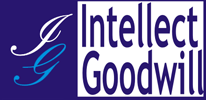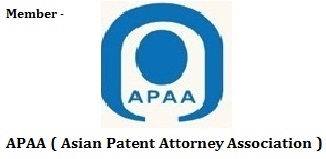
PayPal, an online payments system recognised worldwide, has appealed to the Indian authorities to refuse the trademark registration application from Paytm in India, citing similarities between the two company’s logos. The company in a notice has accused Paytm of using a logo that’s “deceptively and confusingly” similar to PayPal. PayPal in a notice said, “The impugned mark sought by the applicant [Paytm] is deceptively and confusingly similar to the opponent’s earlier trademark in as much as applicant has slavishly adopted the two-tone blue colour scheme of the opponent in its entirety.” PayPal has claimed that it has been using its trademark since 1999 and is registered in all countries where it operates, including India. The company has asked authorities to refuse the trademark application on the grounds of deceiving the consumers and similarity with PayPal’s logo. “The applicant is attempting to register a trade mark which is of such nature as to deceive the public and cause confusion. The registration of the impugned mark is therefore liable to be refused registration under the provisions […],” states the notice.
We’ve reached out to Paytm about its response to PayPal’s claims, and will update this article when we hear back.
PayPal has questioned the choice of colours made by Paytm for the logo. “The first syllable in each mark is in dark blue colour and the second syllable in a light blue colour. Further, both marks begin with the term “Pay” which consumers tend to remember more than the second syllable, and the marks are of similar length. These similarities cause a likelihood of confusion in the aggregate, especially considering the fame of the opponent’s earlier trade mark.”
Further, the notice raises questions on intention of the applicant, which is Paytm in this case. “There is no reason for the applicant to adopt the identical colours and colour scheme other than to take advantage of the reputation the opponent has built up into this combination in connection with its popular services. The applicant could have chosen from a sheer endless variety of colours and colour combinations.”
The company has also requested to refuse the application on the basis it may dilute the brand equity of PayPal. “Such adoption and/ or use of the impugned mark is likely to cause confusion and deception amongst the members of trade and public in that they will mistakenly believe that the services under the impugned mark originate from the opponent or that the applicant is affiliated or connected with the opponent, which is not the case. Further, such adoption and/ or use of the impugned mark is likely to dilute the brand equity of the opponent’s earlier trade mark.” (Courtesy – NDTV News ) .
China top innovator :1 million patent requests in year: UN
GENEVA: China is driving Asian-led growth in innovation worldwide, becoming the first country to file 1 million patent applications in a single year, the World Intellectual Property Organization (WIPO) said on Wednesday.
Chinese innovators filed most of their 2015 applications in electrical engineering, which includes telecoms, followed by computer technology and semiconductors, and measurement instruments, including medical technology, the UN agency said.
The figures for China are quite extraordinary. It is the first patent office in the world to receive more than 1 million applications,” WIPO director-general Francis Gurry told a news briefing to launch its report, “World Intellectual Property Indicators”.
Worldwide, some 2.9 million patent applications were filed last year, a 7.8% increase over 2014, WIPO said. Roughly two in three patents are ultimately approved, Gurry said. The United States ranked second last year with 526,296 patent applications, followed by Japan at 454,285 and South Korea with 238,015.
Gurry was asked about protectionist remarks by US President-elect Donald Trump, who has announced he would kill an ambitious regional trade pact, the Trans Pacific Partnership Trans Pacific Partnership (TPP), and consequences for innovation. Gurry said there had been no general policy statement on innovation thus far.
“In respect of the trade element, what we can say is that the United States remains clearly the biggest filer of applications externally (abroad). So this obviously is related to trade and investment,” he said. “So they have important stakes, very important stakes in intellectual property and trade.” According to the data released at a press conference on January 14th, the State Intellectual Property Office (SIPO) of China received over 1 million applications for invention patents in 2015, which hits a new record high over the years.
Data show that 1.102 million applications for invention patents were received in China in 2015, up 18.7 percent year on year, being the top patent application list of the world for 5 years; about 359,000 invention patents were authorized, 263,000 of which were granted to domestic applicants, 100,000 more than in 2014, up 61.9 percent year on year. By the end of 2015, China holds 872,000 valid patents of invention, and the patents per annum for each 10,000 head of population reached to 6.3.
Besides, SIPO released the details of China’s patent data in 2015. There are 3 provinces (municipalities, not including Hongkong, Macao and Taiwan) obtaining over 30,000 invention patents in 2015, which are Jiangsu (36,015), Beijing (35,308) and Guangdong (33,477). China’s top oil-refiner Sinopec obtained 2,844 invention patents, the most among all Chinese firms, followed by telecom giants ZTE (2,673) and Huawei (2,413).
Among the top ten foreign enterprises, Qualcomm gets to the top with 1,350 invention patents, followed by Canon (1,273), Toyota (1,240), Panasonic (1,117) and Mitsubishi Electrics (1,095). Some well-known foreign enterprises, like GM, Bosch, Philips, Siemens and Samsung are also on the list.
In 2015, SIPO received 30,548 PCT applications, up 16.7% year on year. 28,399 of them were from domestic users, making 93%, up 18.3% year on year; 2,149 were international, making 7.0%. There were 16 provinces (municipalities) that filed more than 100 PCT applications in 2015. The top 5 provinces (municipalities) for PCT applications were Guangdong (15,190), Beijing , Shanghai, Jiangsu and Zhejiang, which contributed to 85% of the total domestic PCT filings.
NEW DELHI: India has rejected as many as 955 patent applications in the pharmaceutical sector in the last three years.
“… 618 applications have been rejected citing Section 3 (d) of the Patents Act, 1970, as one of the grounds for rejection in the last three years,” Commerce and Industry Minister Nirmala Sitharaman said in a written reply to the Lok Sabha today.
“A total of 955 patent applications in pharma have been rejected by the Indian Patent Office (IPO) .
Development of Pharma Patent in India
In a dramatic development, US industry groups recently claimed the Indian government offered them a “private” assurance that compulsory licenses will not be issued, save in emergencies and for non-commercial purposes.
Needless to state, such an assurance flies in the face of the Patents Act and the public health safeguards enshrined in it. Illustratively, Section 84 mandates that a compulsory license be granted in favor of third parties, if the patented invention (such as a drug) is excessively priced or not available sufficiently. Relying on this, Natco, an Indian generic manufacturer, applied for India’s first compulsory licence some years ago and convinced the patent office that Bayer’s patented drug for kidney cancer, Sorafenib Tosylate, was excessively priced and available to hardly 2 per cent of patients. In sharp contrast to Bayer’s Rs 2.8 lakh per month price tag, Natco offered to sell its version of the drug at Rs 8,800 per month.
The controller of patents granted a licence upon the payment of a 6 per cent royalty rate to Bayer, ensuring this was not a zero-sum game but one that could potentially benefit the patent owner as well, given Natco’s knack of selling in markets beyond the ordinary purview of the high-priced patented drug. Upon appeal by Bayer, the patent office decision was validated, with some minor modifications in royalty rates. Unfortunately, despite this excellent start to the invocation of an important public health safeguard, no other licence has been granted since.
World over, compulsory licensing is largely a matter of government discretion to be invoked at the government’s pleasure. However, in India, Section 84 makes clear it’s a legal entitlement that cannot be pimped away through private assurances to foreign friends. Rather, the government is obliged to adjudicate each application on merit, donning its robe as a quasi-judicial authority. The patent office must, therefore, be equipped with personnel vested with a fair degree of adjudicatory competence and independence. Unfortunately, the functioning of regulatory authorities, such as the Drug Controller General of India (DCGI), suggests our government’s record in ensuring its statutory agencies’ independence has been far from fair.
In view of the fact that our government is yet to issue a public clarification on this private assurance, one is not sure if it intended to cover compulsory licensing as a whole. Or meant to restrict it to Section 92, a provision enabling the government to notify compulsory licences (of its own accord) on grounds of national emergency, extreme urgency or public non-commercial use. As such, this licensing is distinct from Section 84, and vests the government with considerably more discretion. However, “discretion” doesn’t mean the government can choose to ignore circumstances that warrant the exercise of discretion.
Unfortunately, while the first kind of licence (Section 84) was granted at least once in the past, the government has yet to issue any notification under Section 92. Even as the health ministry appeared keen on triggering this safeguard for a range of cancer cures, the commerce ministry played spoilsport. It sent a long list of questions asking for “data” on various aspects of the cancers/ numbers of patients, etc.
This seemingly sound list belies a glaring gap in our public health machinery. A lot of health data is difficult to come by, given that they reside in the sole possession of private parties like hospitals, pharmacies and drug companies. Consider cancer, a near epidemic now. Till date, there’s no Central law mandating disclosure of data on patients, treatment methods, drug pricing, etc.
Interestingly, the same data deficit was used by the government to deny the most recent compulsory licensing application under Section 84 to Lee Pharma, which bid for a licence against AstraZeneca’s Saxagliptin, a patented anti-diabetic drug. One finds it paradoxical that the only authority with the legal legitimacy to collect and publish health data transfers this onus to private applicants.
If serious about its constitutional commitment to good health, the government must immediately formulate a legal framework to compel private parties to disclose drug and disease data. More importantly, it must ensure quasi-judicial authorities (the patent office) remain relatively independent and are infused with sufficient training to ensure a fair, impartial and competent dispensation of justice.
Unfortunately, this government appears more keen on the private than the public, preferring trade to health, nepotic control over regulatory independence, and American patents over Indian patients. It’s a trade-off likely to only create more misery in India.



